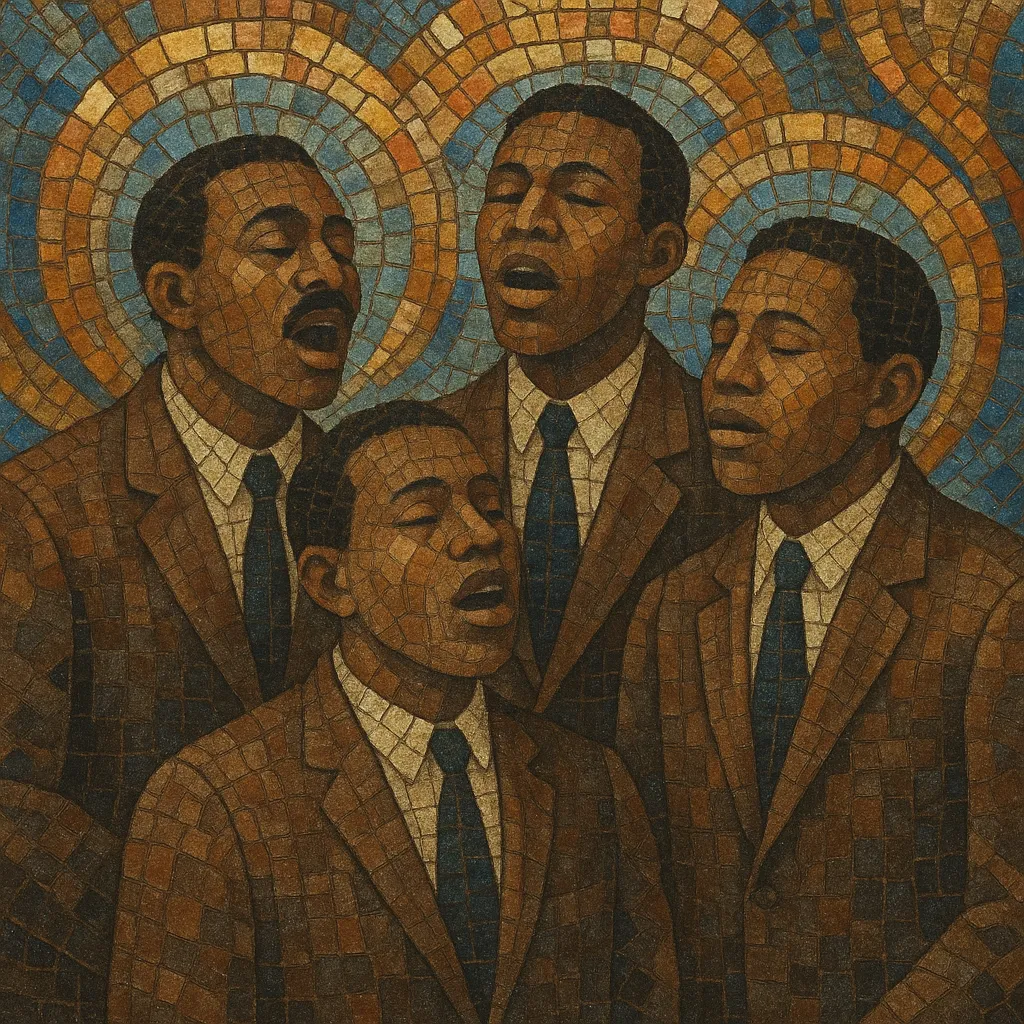Jubilee is an early African American sacred vocal style characterized by close four-part harmony, polished ensemble blend, and concert-stage presentation of spirituals and hymns.
Emerging from Black college quartets and choirs in the post–Civil War era, jubilee arrangements emphasized European-style choral technique while preserving the call-and-response spirit and narrative texts of the Negro spiritual. Performances were typically a cappella, dignified, and restrained compared to later, more improvisatory gospel styles.
Its clear diction, homophonic textures, and graceful dynamic swells made the music suitable for formal halls, where groups such as the Fisk Jubilee Singers introduced spirituals to national and international audiences.
The jubilee tradition crystallized with the formation of the Fisk Jubilee Singers in 1871, who toured to raise funds for Fisk University. Their success prompted similar ensembles at other historically Black colleges and universities (HBCUs), including Hampton and Tuskegee. These groups arranged spirituals for the concert stage, blending Western choral techniques with the repertory and aesthetics of African American spirituals, ring shouts, and work songs.
By the early 20th century, male quartets—often termed “jubilee quartets”—became a hallmark of the style. They favored smooth, balanced blend, tight homophony, and light rhythmic inflection. With the advent of commercial recording in the 1920s and radio in the 1930s, groups such as the Golden Gate Quartet popularized the style nationally and abroad, sometimes integrating light syncopation and novelty effects while maintaining the dignified concert ethos.
Beginning in the 1930s, quartets increasingly adopted a more impassioned, lead-driven approach—later called the “hard gospel” style—featuring expressive melismas, shouted leads, handclaps, and heightened rhythmic drive. Even as many groups transitioned, the older concert jubilee manner remained an esteemed idiom and continued to be performed by college ensembles and traditional quartets.
Jubilee’s emphasis on close harmony, ensemble precision, and sacred repertory laid the foundation for gospel quartet singing and significantly shaped later African American popular styles. Its harmonic language and vocal arranging approach influenced doo-wop, early R&B, soul, and the broader choral presentation of spirituals on concert stages worldwide.
Write for a cappella quartet (TTBB) or mixed choir. Aim for a unified, blended tone with careful balance among parts. Keep vibrato moderate for clarity and blend.
Use primarily diatonic, homophonic harmony with clear, block-chord movement (I–IV–V progressions are common). Employ passing tones, suspensions, and occasional secondary dominants for color. Cadences should be well-voiced and satisfying, often with a gentle rallentando and dynamic swell.
Maintain moderate tempos and steady pulse. Retain call-and-response phrasing inherited from spirituals, but articulate it within a refined concert style. Use dynamic contrasts and legato lines to shape stanzas and refrains.
Arrange traditional spirituals or hymns with strophic verses and refrains. Enunciate text clearly, honoring narrative and devotional content. Avoid excessive ornamentation; prioritize intelligibility and expression through dynamics and blend.
Perform unaccompanied or with minimal accompaniment (e.g., soft organ or piano doubling). Favor dignified stage presence, unified phrasing, and precise tuning. Reserve improvisation for subtle lead embellishments rather than overt melismas typical of later gospel.


